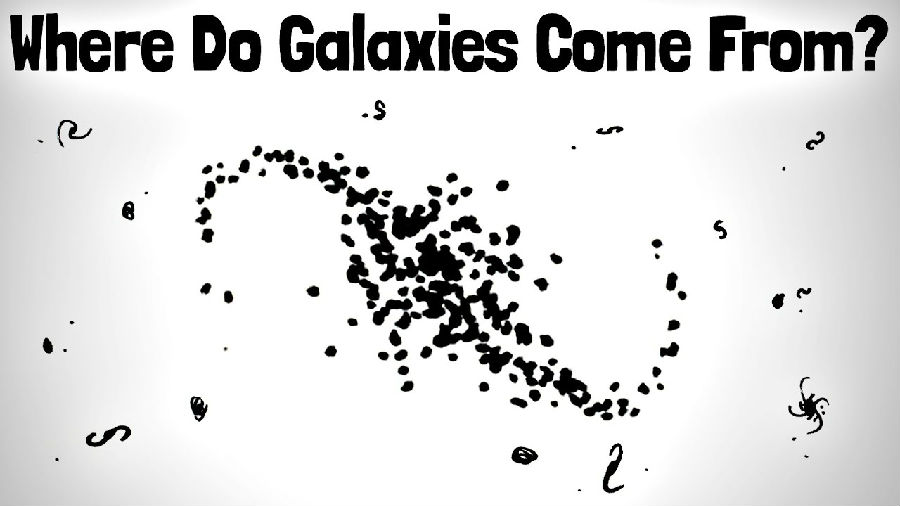Most things in the universe happen too slowly for us to see them happening.
宇宙中大部分事情发生的速度慢到无法观察。
Stars like the sun take tens of millions of years to form, and hundreds of millions of years to orbit their galaxies;
像太阳这样的恒星需要数千万年才能形成,而围绕它们的星系公转则需要数亿年;
colliding galaxies take billions of years to merge. And yet we have a pretty decent understanding of how all these things happen,
相互碰撞的星系需要几亿年才能合并。然而,我们对所有这些事情是如何发生的有一个相当不错的了解,
because there are so many of them in the observable universe that we can look out
因为在可观测宇宙中有很多类似事情
and see different versions of similar events happening in different places,
我们可以观测到不同地方发生的不同版本的类似事情,
and because light takes time to get here we see places at different distances at different times thoughout the history of the universe,
因为光需要经过不同距离、花上不同时间才能抵达这里,
and from all that we can piece together an understanding of how stars are born and how they die,
从所有这些,我们可以拼凑出关于恒星如何诞生和死亡、
how galaxies develop and interact, and so on. It's kind of like if you only had ten minutes to study how humans grow:
星系如何发展和相互作用等等的理解。这有点像如果你只有十分钟来研究人类如何成长,
you couldn't see any one person grow very much in that time, but by looking at humans of different ages all around the world,
你不可能这段时间内看到一个人的成长全过程,但是通过观察各地各年龄段的人类,
you can get a pretty good picture of what a human life looks like. However, the very first galaxies to ever form were so small and dim
你可以很完整的了解一个人的一生。但形成的第一个小行星太小太暗
that we don't have nearly as good an idea of how baby galaxies are born as we do about how they behave and interact later in life.
所以我们对小星系是如何诞生的了解远不如我们对它们在生命后期的行为和相互作用的了解。
Our current understanding is that in the early universe, before any stars had formed,
我们目前的理解是在恒星尚未形成前的早期宇宙中,
everything was just spread-out gas and a lot of dark matter.
一切都是气体和大量的暗物质。
Dark matter is the matter that doesn't interact with things othe than gravity.
暗物质是除了重力外不跟其他物质相互作用的东西。

Gravity would have caused slightly denser areas of dark matter to attract into clumps,
重力会导致密度稍大的暗物质区域被吸引成块,
pulling in bits of gas until they were dense enough on their own to gravitationally collapse and start thermonuclear fusion.
吸引气体碎片,直到它们自身的密度足够大,从而发生重力坍缩,并开始热核融合。
A star. Many stars. Clusters of stars and their associated dark matter attracted together and merged,
一颗恒星。很多恒星。恒星群与附近暗物质互相吸引交融,
and then those clustered-clusters clustered together, eventually forming the most distant (and longest-ago) galaxies we see today.
然后那些聚集的群体又彼此聚集,终于形成我们现在观测到的最远(也最古老)的星系。
But we don't know exactly how soon after the big bang the clumps of dark matter and gas formed;
但我们不知道大爆炸多久后暗物质和气体团才形成的,
or when during the process of clumping and clustering the first stars ignited;
也不知道恒星在聚集成群的哪个阶段出现,
or if there was a minimum dark-matter-clump size necessary to attract enough gas to form stars;
或是否有一种在气体聚集成恒星的过程中扮演重要角色的暗物质团?
or if the very first star clusters came together to form galaxies at all – they might have been so small and fragile
甚至不知道这些恒星群的聚集到底能不能成为星系—它们可能太小太脆弱,
they were blown apart when their own stars went supernova and the first galaxies
当它们自己的恒星变成超新星时,它们被炸得粉碎,而第一代星系
may have actually formed from a second round of clumping of gas and dark matter as well as dust from the explosions.
可能实际上是由第二次聚集的气体、暗物质和爆炸后的尘埃聚集而来。
To be honest, we don't even have a good enough definition of
老实讲,我们甚至对恒星群和星系
what a galaxy is to know when to stop calling something a cluster of stars and when to start calling it a galaxy.
没有一个好的定义。
What we do know is that today we have bajillions of galaxies in our universe,
我们了解到的是,如今我们的宇宙中有无数星系,
none of which existed 13.8 billion years ago, so somewhere in between they must all have been babies.
而没有一个的年龄到达138亿年,其中某个时段一定是婴儿期。
Big gassy babies surrounded by clumps of dark matter.
由暗物质包围着的的巨大气体婴儿。
This video was made with the support of NASA's James Webb Space Telescope and the Space Telescope Science Institute.
本期视频由NASA詹姆斯韦伯空间望远镜和空间望远镜科学研究所赞助播出。
The James Webb Space Telescope is especially sensitive to the infrared wavelengths
詹姆斯韦伯空间望远镜对来自婴儿星系
that light from baby galaxies gets stretched to by the time it arrives in our solar system,
的光线到达我们太阳系时的红外线波长特别敏感,
so astronomers are excitedly looking forward to using the JWST to learn more about the very first stars and galaxies that ever formed in the universe.
所以宇航员们期待使用JWST了解更多关于宇宙中初批行星和恒心的知识。












